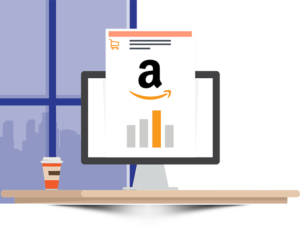
Unlocking Amazon Success: Mastering Total ACOS Optimization
Introduction: In the dynamic realm of Amazon advertising, success hinges on mastering key metrics, and
Taxes, taxes, taxes… A Seller’s worst nightmare. They can be filled with scary numbers, calculations, and many complications. We are providing you an amazon fba seller’s guide that will help you understanding sales tax.
Taxes give you sleepless nights and an urge to bang your head on the table, especially for Amazon Sellers, where the complexity of filing taxes is much more. Many Sellers are not even aware of the sales tax and its regulations on the marketplace.
They might be intimidating, but they’re equally as important for your business to run smoothly. This is why, for compliance reasons, you must be well aware of the ins and outs of sales tax.
Sales tax regulatory laws are a broad topic, and taking it all in one guide can be overwhelming. So, to keep things simple, this blog will cover one of the most vital pieces of sales tax regulatory laws, the sales tax nexus.
Let’s jump right into the very basics…
Many Amazon Sellers are unaware of the fact that they need to pay taxes on Amazon. However, the point still stands — online retailers (including those selling on the e-commerce giant) need to pay taxes like all other brick-and-mortar businesses. By help of this amazon fba seller’s guide will make this very simple just follow remaining steps.
There are two types of taxes: i) income tax, and ii) sales tax. Sales tax is the fixed percentage of the price of a product that a customer pays to the government — the Seller collects the sales tax. On the other hand, income tax is the percentage of your net income that you pay to the government.
As an Amazon Seller, the type of tax that concerns you in this situation is the sales tax — or, more explicitly, collecting it. Collecting sales tax is a crucial step during your transaction as the state and/or the local government will fine you big time if you don’t collect and remit it. You will have to pay fines and remit the taxes from your pocket, which will eventually harm your business, leading things to go downhill.
Start by registering in states where they require you to collect sales tax. Then, when customers buy your products, you collect the tax, file a report on your sales to the relevant states, and remit the sales tax to each state.
Why are we talking about states here?
Well, sales tax in the US is not administered at the federal level; instead, it is dictated at the state level. Five states do not collect sales tax at all. These are Alaska, Delaware, Montana, Oregon, and New Hampshire.
For others, the rules and regulations vary. In the case of some states, there are even different local tax collection requirements. This creates thousands of tax jurisdictions within the country.
So will you go through each jurisdiction one by one? Certainly not!
That is where the sales nexus comes in handy. The sales tax collection regulations you have to abide by depends on the location of your sales nexus.
To put it in simple terms, nexus is a commercial connection, and sales tax nexus is the commercial connection between a Seller and the state, which makes the Seller liable to collect, register, and remit sales tax in that state.
Traditionally, it meant having sufficient physical or business presence like a shop or a sales representative in a region. This was easy to understand. However, things have evolved with time and now we have many different types of sales tax nexus. Let’s take a look at them one by one.
Physical nexus refers to a business having a direct connection to a state. A business could be based in that state or have a branch, warehouse, home office, company, etc.
For example, if you’re selling socks and your retail outlet is in Nevada, then you have a physical nexus in Nevada.
Many states consider that if you store your inventory or goods in their state, then you have a nexus with them. This is one nexus Amazon Sellers can relate well to, as they store their items in Amazon fulfilment centers in different states.
If you’re affiliated with an individual or a business in a particular state that gets you sales (in exchange for a percentage of the profit) above the threshold set, then you have a nexus in that state. Referrals and affiliate marketing are the primary sources for this type of nexus.
If you partner with an influencer in another state for your business and that gets you a good boost in your sales volume, a nexus with that state is formed.
Similar to affiliate nexus but without the affiliation, click-through nexus is formed when you get sales based on a recommendation from a business in another state, or you get sales through advertising your product in that state.
Affiliate nexus ties to in-state affiliates and click-through nexus links to in-state websites.
Economic nexus is formed when your sales or any other eCommerce performance metric reach above the set standard limit for that state.
Suppose your sock business surpassed $150,000 in sales and the annual sales limit for the state was $100,000. Since you surpassed the limit, you now have a nexus in the state. This is the most upcoming nexus and might phase out the other types listed above.
As we discussed earlier, storing inventory for sale also creates a nexus, which is the case for Amazon Sellers.
To facilitate easy shipping, Amazon FBA fulfilment centers are distributed throughout the country. Does that mean you have to pay sales tax in every state? No, Amazon only assigns you sales tax nexus in the states where your FBA inventory is stored.
You can find out the states in which you have sales tax nexus via fulfilment reports. Go to Seller Central > Reports > Fulfillment > Inventory event detail report and note down the fulfilment centers mentioned.
Luckily, sales tax collection and remittance have become easier for Sellers due to the introduction of the marketplace facilitator law.
Marketplace facilitator legislation is a law that shifts the responsibility of collecting sales tax from third-party Sellers to the marketplace facilitator (in this case, Amazon). And so, the eCommerce giant will charge, collect, and remit sales tax money on your behalf in the states where the law is practiced.
Here is a list of a few of the states that impose the marketplace facilitator law:
And there are many more. Almost all states practice marketplace facilitator law in the US. The only ones that don’t have it are Delaware, Montana, New Hampshire, and Oregon.
When collecting nexus sales tax, there are two types of states: a) origin-based states, and b) destination-based states.
As the name suggests, origin-based states require you to collect tax at the rate of the place that you’re based and doing business in.
Suppose you are selling socks in Philadelphia, Pennsylvania and you ship them to New Castle, Pennsylvania. Since Pennsylvania is an origin-based state, you will have to pay the sales tax at the rate of Philadelphia, where your business is located.
Origin-based states include Arizona, Pennsylvania, Illinois, California, Missouri, Mississippi, Ohio, New Mexico, Texas, Virginia, Tennessee, and Utah.
Then we have destination-based states. These states require you to collect taxes following the rates of the location you will ship to.
Taking the same example above. If you sell socks in Miami, Florida and plan to ship them to Orlando, Florida, then you will pay the sales tax based on the rates of Miami as Florida is a destination-based state.
Destination-based states include Alabama, Florida, Colorado, Arkansas, Maryland, Connecticut, Georgia, Michigan, District of Columbia, Washington, Idaho, Massachusetts, Hawaii, Kansas, Iowa, Indiana, Maine, Nebraska, Kentucky, Louisiana, Minnesota, Oklahoma, Vermont, New York, New Jersey, Rhode Island, South Dakota, North Dakota, Nevada, South Carolina, North Carolina, Wyoming, West Virginia, and Wisconsin.
These are in state laws. Now, what if we want to ship from an origin-based state to a destination-based state or vice versa as a remote Seller?
Well, you’ll typically collect sales tax at the destination state rate. However, there are a few exceptions to this rule, that is, when you are shipping from California, Arizona, or New Mexico, you must collect sales tax based on your origin state.
The subject of taxes can be daunting, but their importance is far too much to overlook. In this blog, we will clear the confusion of whether Amazon Sellers need to pay taxes on the sales they make, covered the basics of sales tax nexus and its different types, and how sales tax is collected and calculated when you are doing FBA.
We hope after reading the post, you are well equipped with all the fundamentals of sales tax nexus, and the next time if you get a tax situation, you can face it headfirst. It’s time for you to venture out into the world of sales tax. Good luck!
We hope this amazon fba seller’s guide made your way some simple.
Visit our services page or contact us to get any service. You can find more information like this here.

Introduction: In the dynamic realm of Amazon advertising, success hinges on mastering key metrics, and

Building and managing a unique brand management can be tricky. Amazon Brand Registry is here

Introduction: Welcome to the dynamic world of e-commerce! If you’ve set up your Amazon store

Learn about crafting high-performance product listings in the Amazon store with this guide. What can